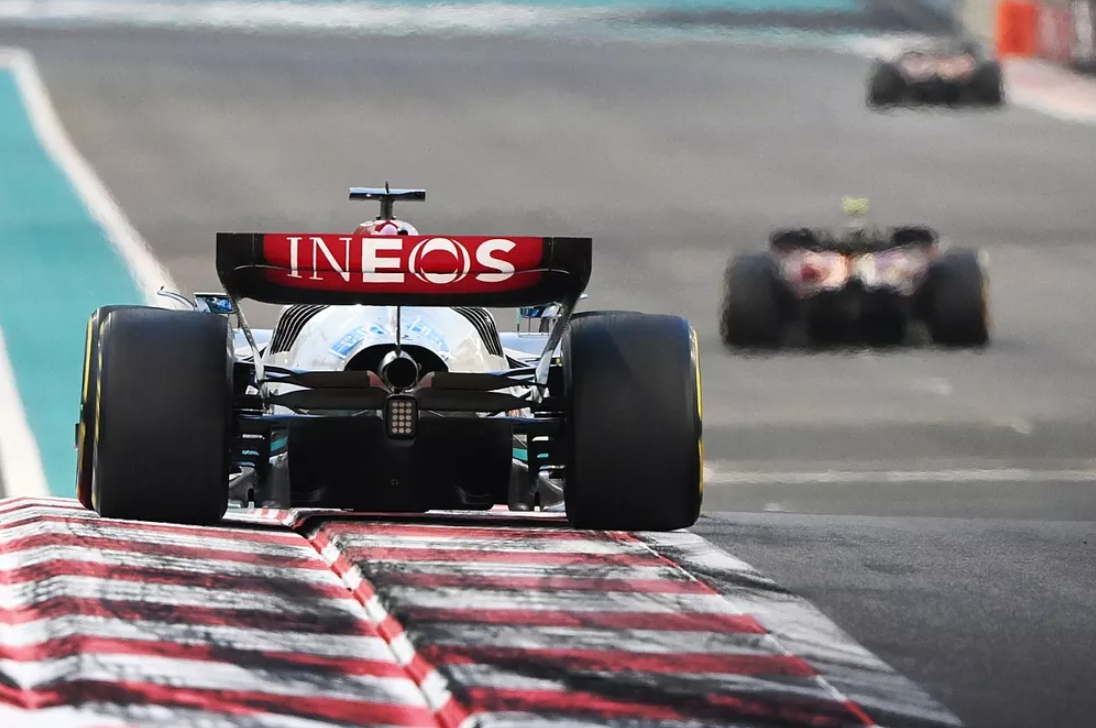Given that the upper section of the endplate had been removed, a contoured transition was required to connect the mainplane and upper flap, and as a result, a complete reevaluation of the concept was necessary.
Although the design limitations still offered multiple possibilities, teams had to find a compromise between generating downforce and the negative effect of drag.
As predicted, the spoon-shaped mainplane design was widely used throughout the grid, as it provided more flexibility in the transition area.
As the season progressed, teams began to take more risks with their designs. Some chose a more traditional, flat-profile mainplane, while others made notable changes to the shape of the upper corner of the endplate and wingtip, including the presence or absence of cutouts.
Red Bull did not make as many changes to its rear wing as some of its competitors. It had a limited number of rear wing designs to suit the different circuit types and weather conditions on the calendar.
Red Bull had more options for design variations with its beam wing arrangement. It not only fine-tuned the design but also had different configurations to help enhance its setup.
The team based in Milton Keynes was the first to use the bi-plane style arrangement, in which one element is positioned above the other. The more traditional arrangement was only employed when maximum downforce was necessary, for example at the Hungarian circuit.
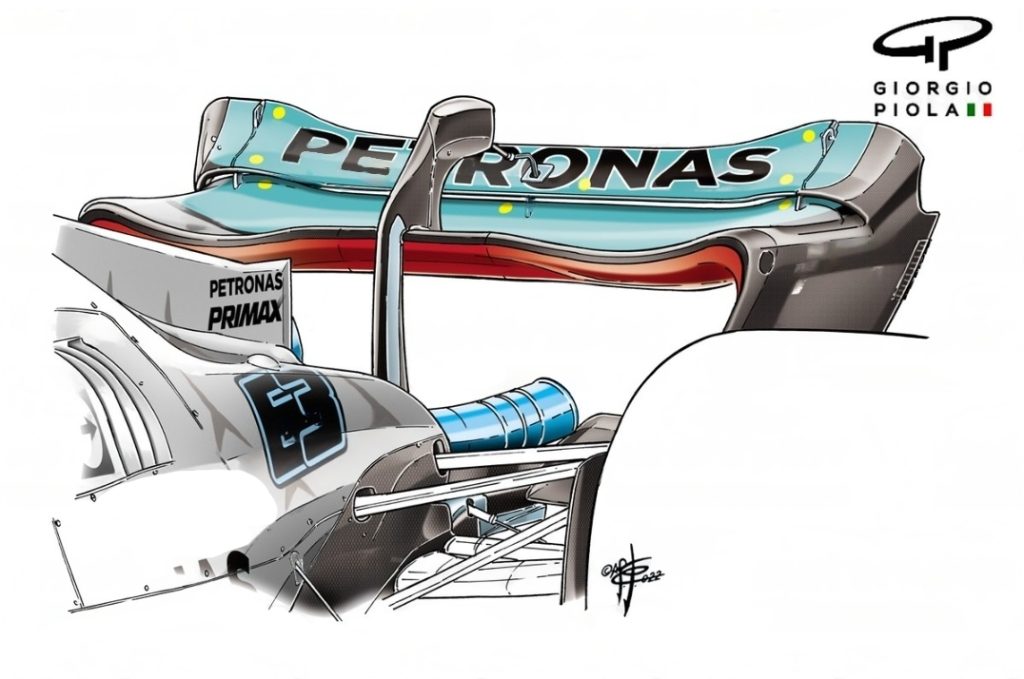
As expected, Ferrari also had various designs to suit the different downforce needs of each circuit. But it also made adjustments to optimize its design in relation to the rest of the car. For example, two different rear wing configurations were used in Canada, with Carlos Sainz using a design for higher downforce, and Charles Leclerc using a new arrangement that emphasized the shape of the upper wing elements and beam wing.
Mercedes took a distinct approach to its initial design, choosing an upturned leading edge in the central part of the wing and a more compact transition to the endplate.
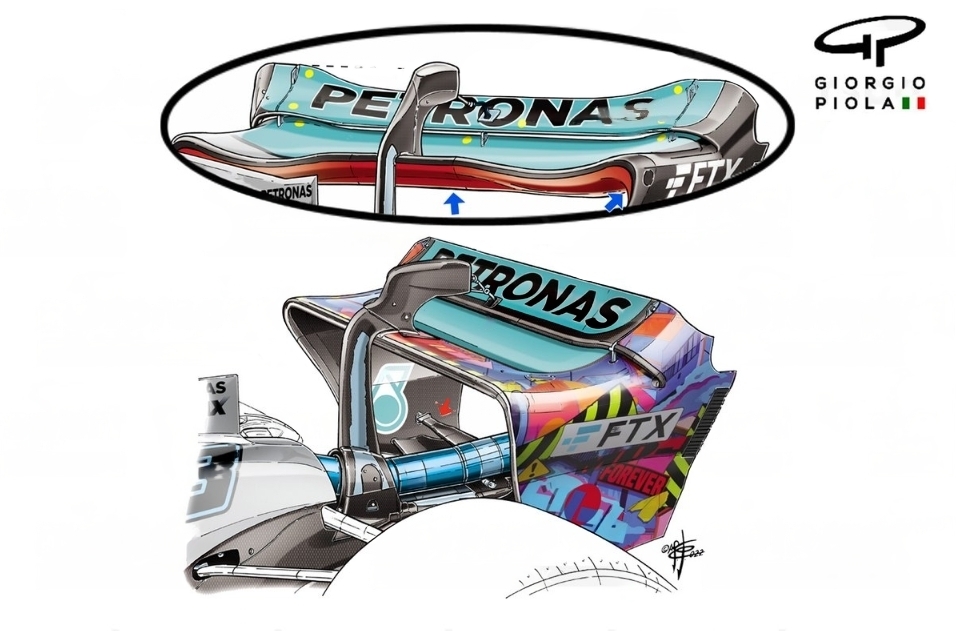
The team soon discovered that the wing was not performing as expected and made substantial reductions to the upper flap, and on several occasions, added a Gurney to the trailing edge to improve the balance of the car.
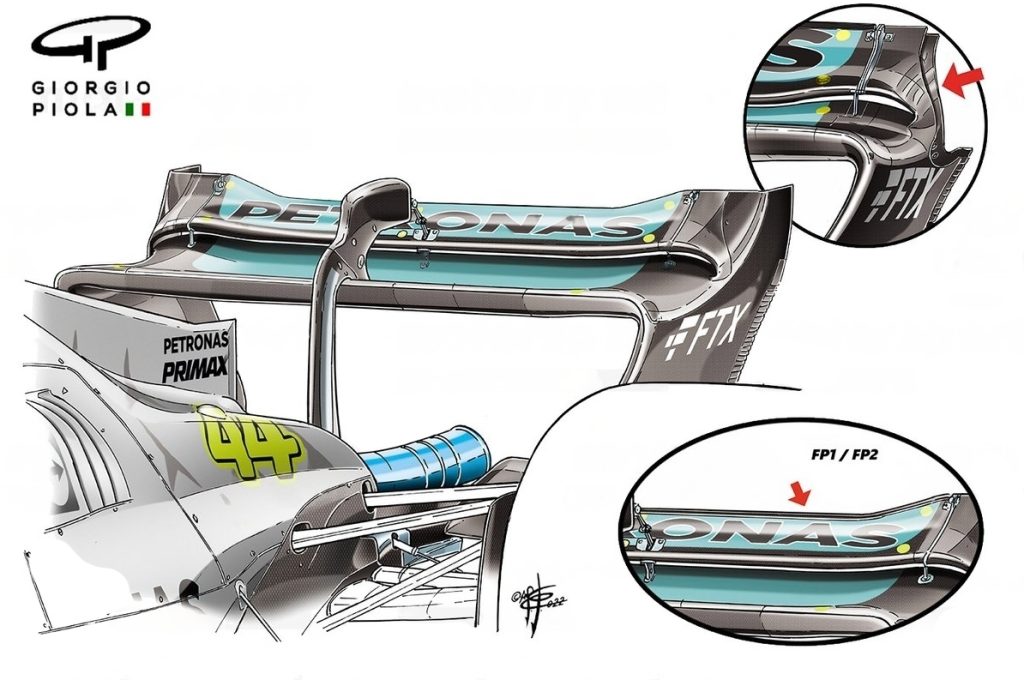
A rear wing with low downforce was first introduced at the Miami Grand Prix, which eliminated the upturn on the leading edge of the mainplane and reduced the transition to the endplate.
The team continued to use similar methods, such as reducing the upper flap and adding a Gurney when necessary, to improve the balance of the car throughout the later stages of the Mercedes’ campaign.
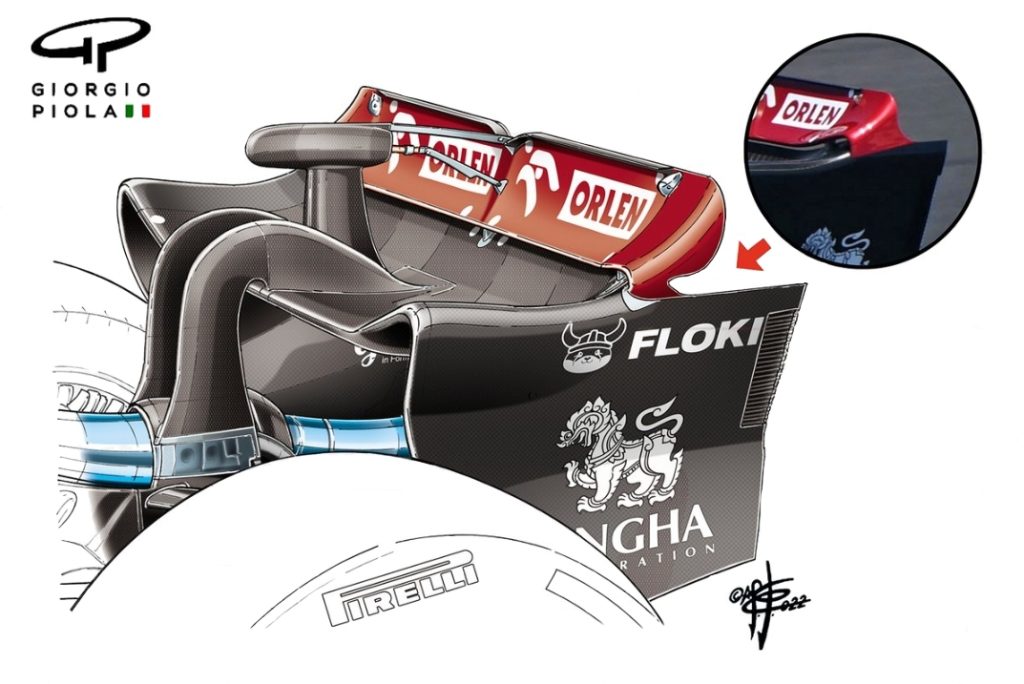
Mercedes also had the ability to interchange panels in the wing tip section to optimize the required downforce and drag. The team also adopted the fully enclosed wing tip design, which was first implemented by Alpine in Saudi Arabia.
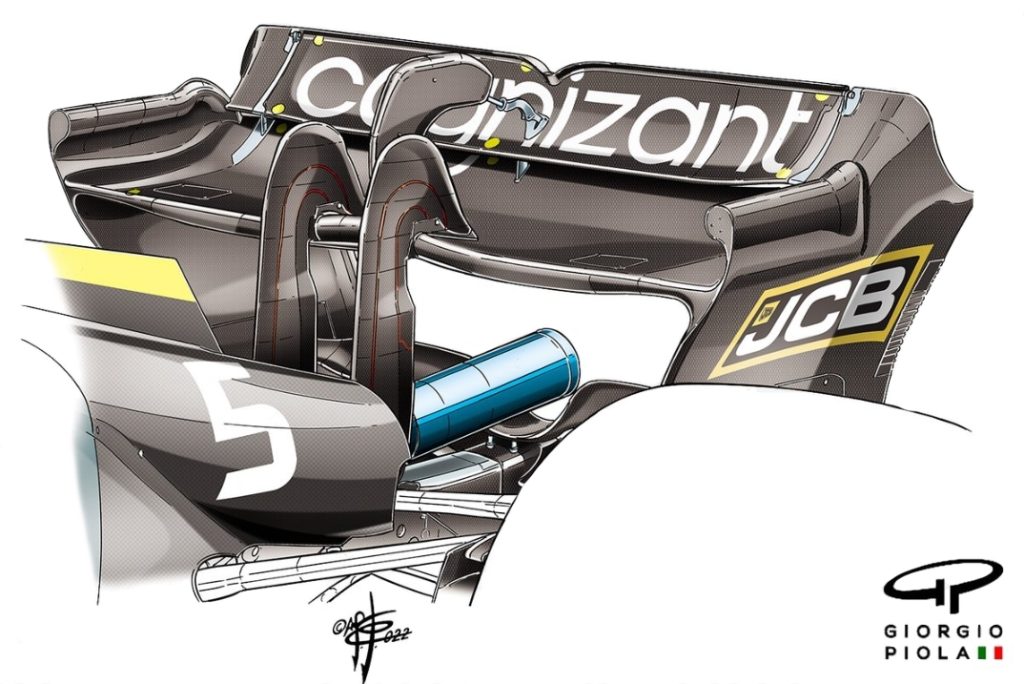
Alfa Romeo used an innovative design in the tip section cutout (as indicated by the red arrow) to reach its drag and downforce goals in specific conditions and a conventional design for other situations (as shown in the inset).
Aston Martin was recognized for its unique rear wing design for 2022, which featured a rolled endplate extension that created an illusion of an endplate above the mainplane’s surface, violating FIA’s regulations. Despite its innovative design, no other team adopted this design, and it was banned by FIA from 2023 onwards.
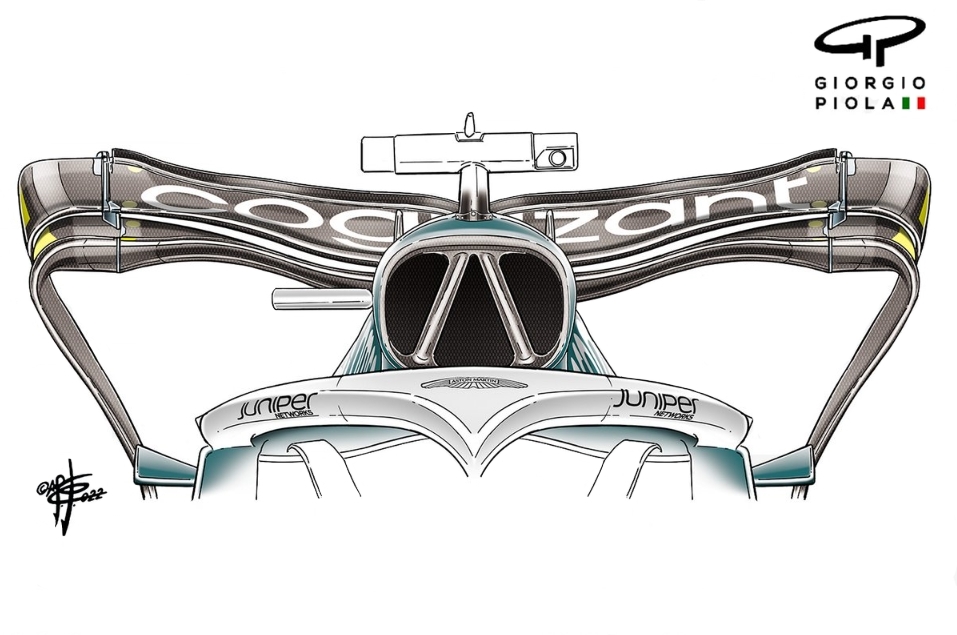
Aston Martin also had the most unconventional rear wing design in Monza, featuring a twisted version of the spoon-shaped design.

